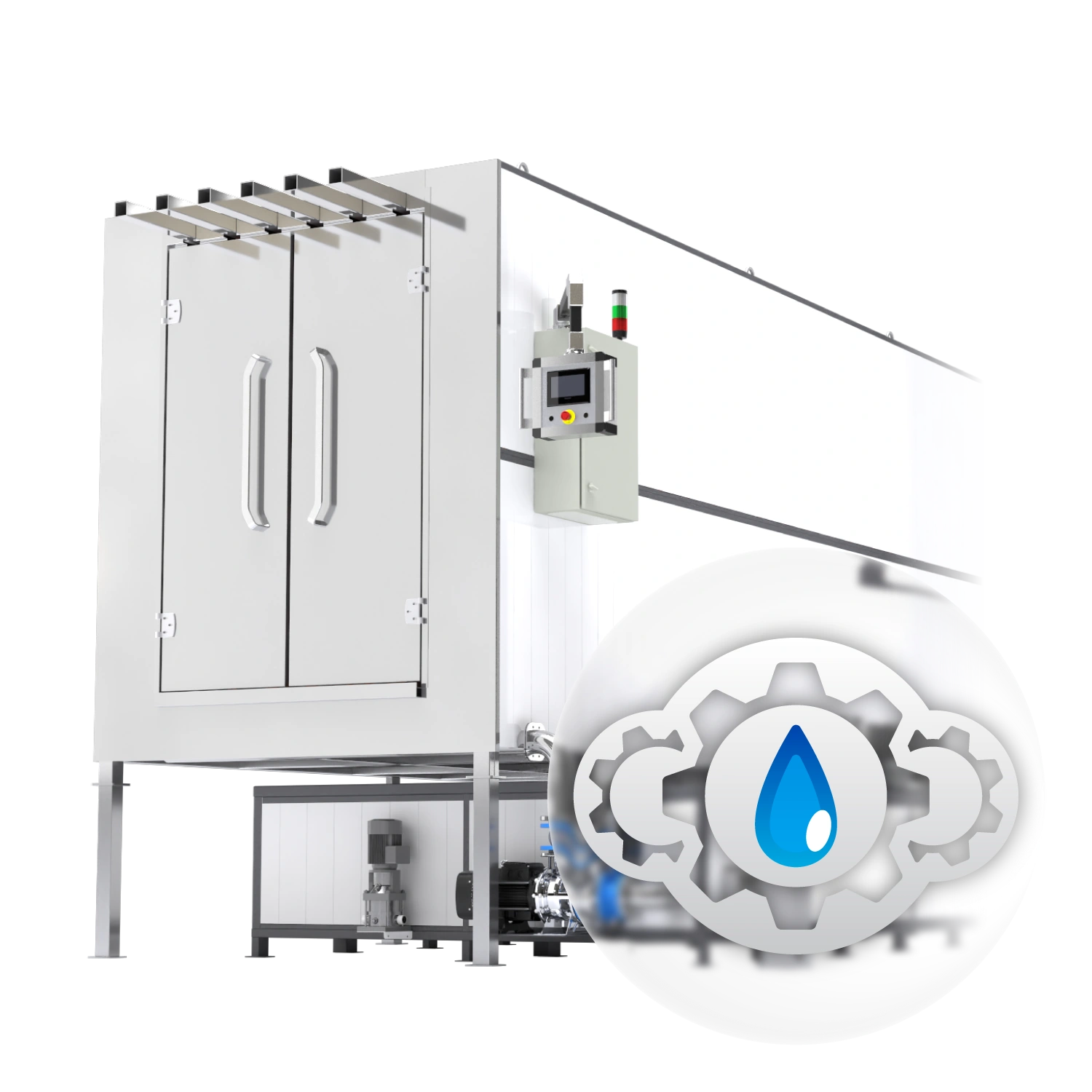The heart of
Automatic washer for surface preparation for electroplating and bonding
An automotive parts manufacturer has implemented an automatic washing plant, eliminating human error and downtime. The result is a predictable working rhythm, repeatable part quality and no complaints - a costly investment, but one that pays off on a large scale.
Romer case study
Automatic washer for surface preparation for electroplating and bonding

Assumptions:
-
Large series of details, hundreds or thousands of pieces per day.
-
High requirements for repeatability and consistent process parameters.
-
The need to eliminate human error and relieve the burden on operators.
-
Need for closed loop and emission reductions to meet environmental and health and safety requirements.
Estimated effectiveness:
500-1000 details per day to an identical standard.
< a few tens of seconds
line ready from the start of the shift thanks to automatic bath heating.
no qualitative differences between shifts and operators.
one operator supervising the process, with no manual supervision of each piece.
up to 2000% higher throughput compared to a manual wash and a clear reduction in the work cycle.
Proposed solution:
A manufacturer of automotive components faced a challenge: the assembly and painting line required parts to be perfectly clean, but manual washing caused quality differences between shifts. Once the surface was prepared correctly, at other times there were grease or oxide stain clearances that led to complaints and delayed the whole process. Cycle times depended on the operator, and the process often involved several workers simultaneously. The line was repeatedly waiting for parts, and the cause was always the same - human error due to pressure and an imposed pace that could not be maintained without loss of quality.
The manufacturer therefore decided to implement an automatic wash. It features a multi-stage process including degreasing, rinsing in mains water, rinsing in demineralised water, passivation and final rinsing. The whole process takes place in a single closed chamber and the parameters - including time, temperature and sequence of stages - are supervised by a PLC panel. The operator sets the programme and the system itself prepares the baths before the shift starts. As a result, each batch goes through an identical sequence and the production line runs without delay.
Cleaning efficiency is ensured by densely spaced nozzles from the top, bottom and sides, eliminating so-called dead zones. Separate spray systems, pumps and pipework, complemented by air purging, minimise the transfer of chemistry between processes. This not only stabilises parameters and extends the life of the bath, but also significantly reduces agent consumption.
At the same time, the closed-circuit chamber reduces fume and waste emissions, which has simplified environmental paperwork and improved working conditions. Operators are no longer in direct contact with aggressive chemicals - their role is reduced to overseeing the cycle and periodically servicing the unit, rather than performing tedious manual cleaning.
As a result, the company has gained a process that is predictable, repeatable and immune to the variability of human labour. Production has accelerated and complaints resulting from unprepared surfaces have virtually disappeared.
Check also:
Products used in this case study








